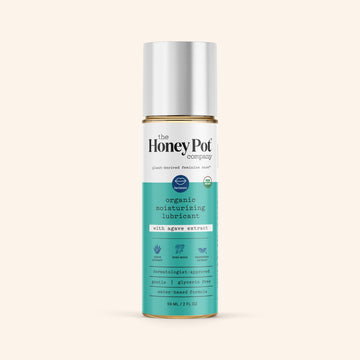As an OBGYN, I talk to patients every day about their periods. The pain, the bloating, the irritation—it’s a conversation that comes up far more often than people might expect. Yet, despite how common these discomforts are, many still feel like they have to suffer in silence.
For too long, discomfort has been treated as an unavoidable part of life rather than a problem that deserves real solutions. And unfortunately, the period care industry often reflects this mindset. While we’ve seen innovation in the types of products available, comfort remains an afterthought, and those who menstruate are often left to find their own workarounds.
What Does "Discomfort" Really Mean in Period Care?
Period discomfort isn’t just about cramps—though that’s certainly a major complaint. It extends to a range of symptoms that disrupt daily life, many of which are still not fully addressed by mainstream menstrual care products.
Cramps and Pain – Period pain can range from mild to debilitating, yet most period products focus only on absorption, not on easing pain.
Vulva Irritation – Many pads and tampons contain fragrances, synthetic materials, or chemicals that can cause irritation, yet hypoallergenic options remain limited and often expensive.
Bloating & Digestive Issues – Menstruation affects the entire body, including the gut, but period care rarely considers this connection.
Mood Swings – Hormonal shifts impact mental well-being, but there’s little conversation around how period care products can support emotional and hormonal balance
Confronting Discomfort
Because period discomfort is so often overlooked, many people are left to figure out their own solutions—sometimes out of necessity, sometimes out of frustration. Some might rely on a strong exercise routine, herbal teas, or heat patches.
Others rely on hormonal birth control, not for contraception, but to regulate painful cramps. Some people have even turned to unconventional methods, like using antihistamines in hopes of easing PMS symptoms, despite limited research on their effectiveness. And then there are the everyday adjustments—doubling up on pads to improve absorbency or relying on heating pads all day just to get through work.
These makeshift solutions highlight a bigger issue: instead of having a medical system and an industry that prioritizes comfort, people who menstruate are left to troubleshoot their own pain. While some of these solutions may work, they shouldn’t have to be the default. We need better options—ones designed with real experiences in mind.
More Choices, But Not Always More Comfort
The period care industry has come a long way. We now have organic tampons, menstrual cups, reusable period underwear, and even wearable heat patches. But while innovation has brought variety, it hasn’t necessarily brought comfort.
-
Most products prioritize absorption and convenience over addressing pain and discomfort.
-
Those with heavier flows, sensitivities, or disabilities still struggle to find products designed with their specific needs in mind.
-
Sustainable and organic options, while beneficial, remain financially out of reach for many, reinforcing accessibility barriers.
Innovation is happening, but it’s still missing a key perspective: the lived experiences of those who menstruate.
What Needs to Change?
The future of period care must go beyond convenience and absorption—it’s time for a more holistic approach that prioritizes comfort. There needs to be a greater emphasis on researching period pain, moving beyond the standard recommendation of painkillers to truly understand and address menstrual discomfort.
Open discussions between patients and healthcare providers must also become the norm, rather than dismissing period discomfort as something that’s just “part of the process.” A personalized approach to cycle management could provide better insights into what individuals need rather than relying on one-size-fits-all treatments. More research into herbal and alternative approaches could also expand the options available, offering natural methods for symptom relief that work alongside medical treatments.
Finally, leaders in the period care industry must collaborate with medical experts, researchers, and those who actually experience periods to ensure that products are designed with real needs in mind. By shifting the focus to comfort, innovation, and inclusivity, we can create a future where period care is about more than just managing bleeding.
Period discomfort shouldn’t be dismissed as an inevitable burden. The more we acknowledge these experiences, the more we can push for meaningful change—because comfort should never be an afterthought.





